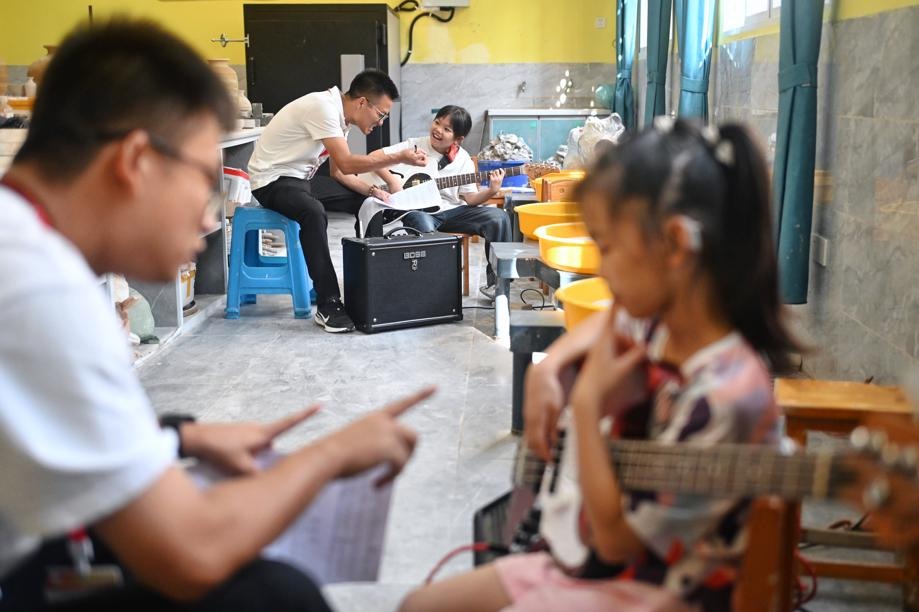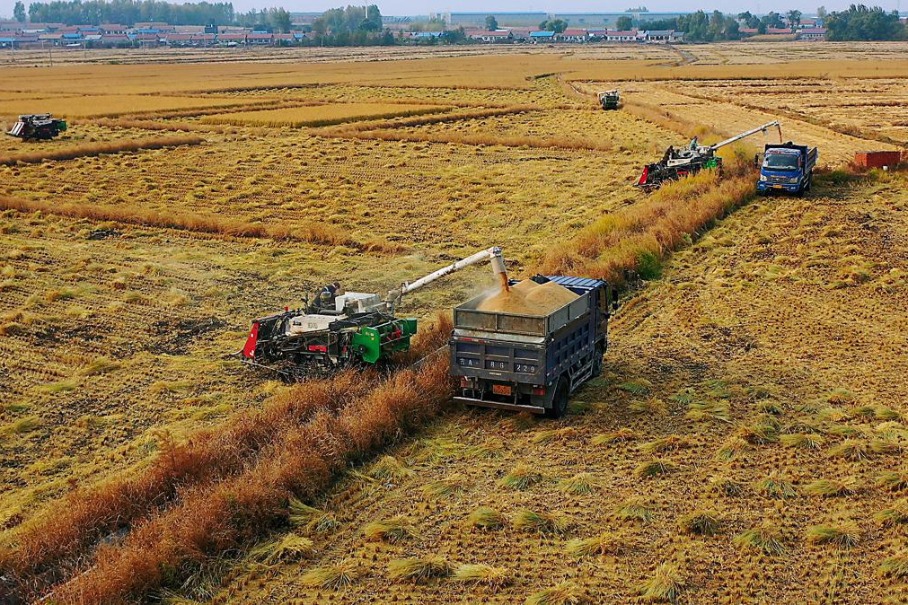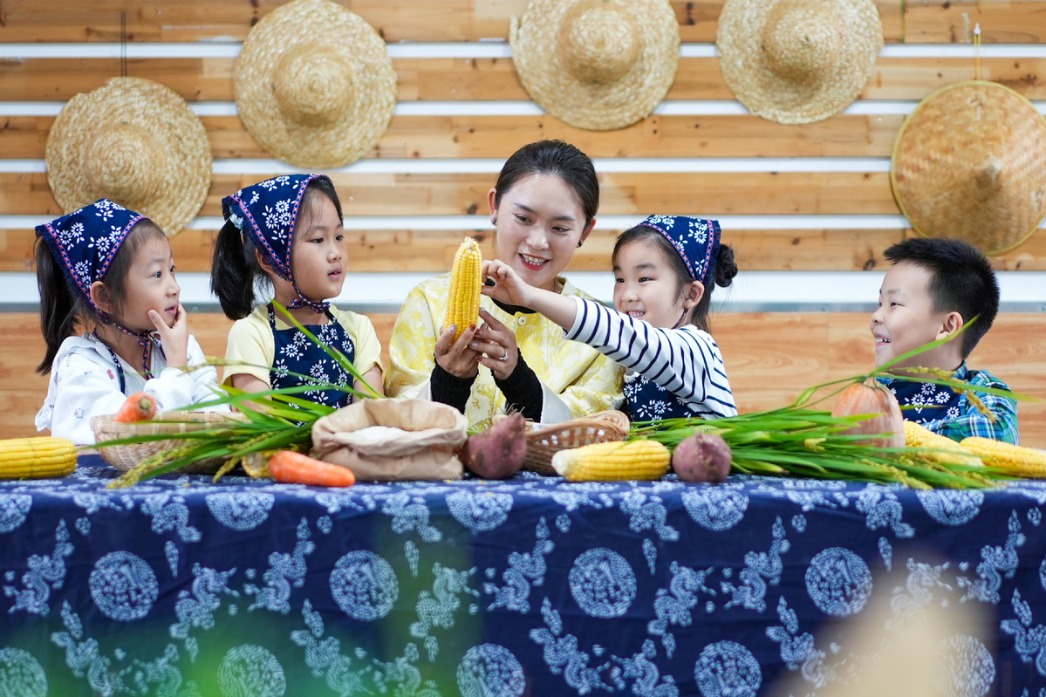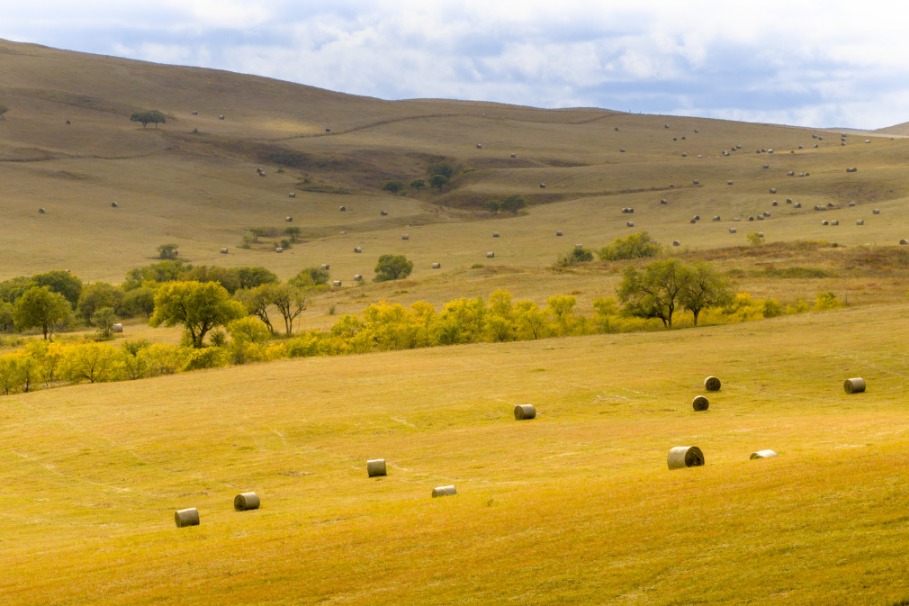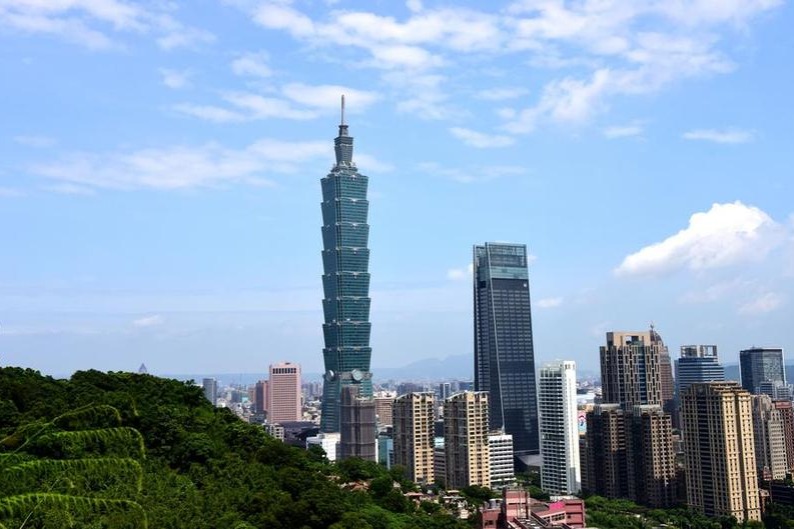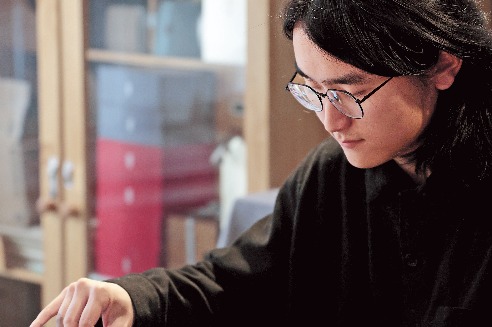Modern agriculture making harvests more fruitful

In late September, farmers in Tangyuan county, Heilongjiang province, busy themselves casting nets into ditches alongside rice paddies, pulling up baskets of river crabs.
Han Shusheng, a farmer from the county's Rongfeng village, said they put in about 750 kilograms of crab eggs and harvested over 3,000 kg this year. Each hectare can yield the farmer an additional income of 15,000 yuan ($2,103). "From the same piece of land, we get both rice and crab," Han said, adding that the rice harvest follows the crab harvest.
The co-cultivation of crabs and rice is gaining ground as farmers search for ways to raise incomes while keeping agriculture green. In Rongfeng village, 20 hectares of rice and crab paddies were cultivated this year, producing bumper yields before the National Day holiday in October.
Under the co-cultivation model, crabs loosen the soil, eat weeds and pests, and fertilize the fields with their waste. In turn, the rice paddies provide crabs with shade, micro-organisms and natural feed, which results in fewer chemicals being used, healthier crops and a second source of income.
Chen Jun, another farmer in the county, said the model doesn't affect grain output and could even increase yields. "Feeding the crabs is very convenient, once a day is enough," Chen said.
Liu Hongnian, deputy head of Tangyuan, said the model has been widely applied county-wide. In Fusheng village, the Qichen grain planting cooperative has created a demonstration base using water from a major tributary of the Songhua River.
Farmers have reported yields of 600 kg of rice and more than 225 kg of crab per hectare, boosting profits by about 15,000 yuan compared with planting rice alone. The cooperative also employs local households, adding about 4,000 yuan per person in annual income, Liu said.
Across Heilongjiang, counties such as Mulan have also launched rice-crab and rice-shrimp projects in partnership with cooperatives and local governments, integrating ecological and economic benefits while setting an example of modern agriculture.
The dual harvest also draws tourists during the golden autumn season. Villagers are now planning agritourism ventures such as crab-catching festivals and farm stays, local officials said.
In Yulin city, Shaanxi province, more than 2,667 paddy fields have also been developed into crab-rice systems. Qiao Jianbing, a farmer from a breeding cooperative in Hengshan district, oversees workers sorting and packing freshly caught crabs in late September.
"These days we're selling 3,000 to 3,500 kg of juvenile crabs and 350 to 400 kg of full-grown crabs daily," he told Yulin Daily. "On busy days, sales top 120,000 yuan, with some already shipping to Xinjiang Uygur autonomous region and Qinghai province."
The crabs have attracted both wholesale buyers and local customers. "I bought five boxes today. Some to eat and some as gifts," said Shu Xiao, a local resident.
- Modern agriculture making harvests more fruitful
- 'Rewilding' promoted as key contributor to conservation efforts
- Intl vloggers explore Shanxi's well-preserved cultural wonders
- Nation urged to embed nature into frameworks
- Intl cooperation seen as vital to advance global greening
- More mainland ports to offer entry permits on arrival to Taiwan residents
















